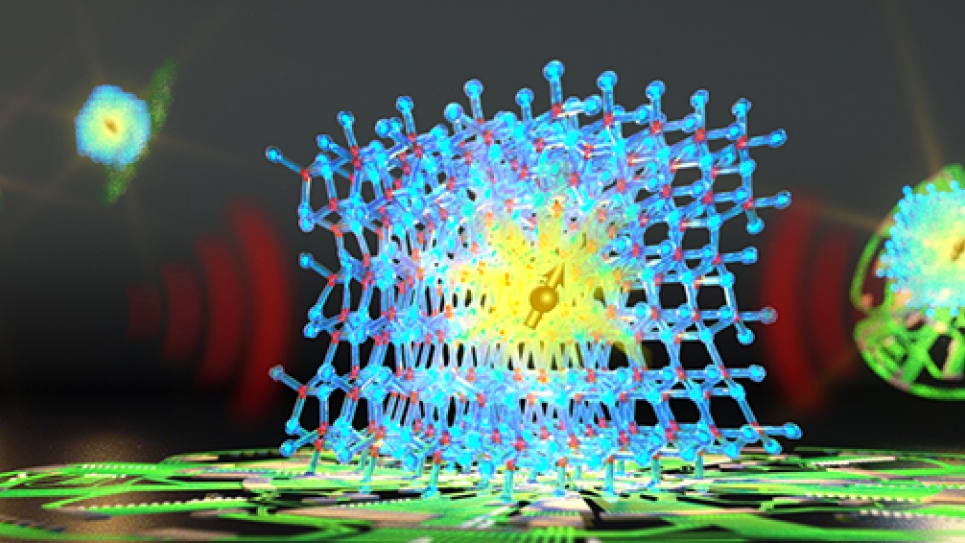
ALCC program awards 1.7 billion core-hours to 26 projects at the ALCF
The U.S. Department of Energy’s (DOE’s) ASCR Leadership Computing Challenge (ALCC) has awarded 26 projects a total of 1.7 billion core-hours at the Argonne Leadership Computing Facility (ALCF), a DOE Office of Science User Facility. The one-year awards began July 1.
Each year, the ALCC program selects projects with an emphasis on high-risk, high-payoff simulations in areas directly related to the DOE mission and for broadening the community of researchers capable of using leadership computing resources.
Managed by the Advanced Scientific Computing Research (ASCR) program within DOE’s Office of Science, ALCC provides awards of computing time that range from a few million to several-hundred-million core-hours to researchers from industry, academia, and government agencies. Chosen through a peer review process, ALCC projects cover a wide range of research areas, including energy efficiency, renewable energy, physics, climate modeling, and materials science.
In addition to the ALCF awards, allocations are also given to projects at the Oak Ridge Leadership Computing Facility (OLCF) and the National Energy Research Scientific Computing Center (NERSC), also DOE Office of Science User Facilities. In 2016, the ALCC program awarded 49 projects totaling 3 billion core-hours across the three ASCR facilities. Additional projects may be announced at a later date as ALCC proposals can be submitted throughout the year.
The 26 projects awarded time at the ALCF are noted below. Some projects received additional computing time at OLCF and/or NERSC.
- James Amundson from Fermilab received 50,000,000 core-hours for “High-Intensity Multibunch Physics in the Fermilab Accelerator Complex.”
- Thomas Blum from University of Connecticut received 180,000,000 core-hours for “Hadronic Light-by-Light Scattering Contribution to the Muon Anomalous Magnetic Moment from Lattice QCD with Chiral Fermions.”
- Igor Bolotnov from North Carolina State University received 72,100,000 core-hours for “Multiphase Simulations of Nuclear Reactor Flows.”
- Choong-Seock Chang from Princeton Plasma Physics Laboratory received 100,000,000 core-hours for “Extreme-Scale Gyrokinetic Particle Simulations to Complete the 2016 OFES National Theory/Simulation Performance Target and to Study the Fundamental Edge Physics.”
- Hanning Chen from George Washington University received 16,000,000 core-hours for “Molecular Modeling of Hot Electron Transfer for Solar Energy Conversion.”
- Taylor Childers from Argonne National Laboratory received 93,500,000 core-hours for “An End-Station for Intensity and Energy Frontier Experiments and Calculations.”
- Sefa Dag from Globalfoundries received 10,000,000 core-hours for “First Principles Design and Analysis of Energy-Efficient NanoElectronic Switches.”
- Frederico Fiuza from SLAC National Accelerator Laboratory received 60,000,000 core-hours for “Ab Initio Modeling of the Dynamical Stability of HED Plasmas: From Fusion to Astrophysics.”
- George Fleming from Yale University received 55,000,000 core-hours for “Exploring Higgs Compositeness Mechanism in the Era of the 14 TeV LHC.”
- Marco Govoni from The University of Chicago and Argonne National Laboratory received 53,700,000 core-hours for “Computational Engineering of Defects in Soft and Hard Materials for Energy and Quantum Information Applications.”
- Phay Ho from Argonne National Laboratory received 10,000,000 core-hours for “Modeling of Intense X-ray Laser Dynamics in Nanoclusters.”
- Calvin Johnson from San Diego State University received 6,000,000 core-hours for “Nuclear Structure for Tests of Fundamental Symmetries and Astroparticle Physics.”
- Ravichandra Jupudi from GE Global Research received 25,000,000 core-hours for “Computational Study of Cycle-to-Cycle Variation in Dual-Fuel Engines.”
- John Laiho from Syracuse University received 66,000,000 core-hours for “Muon g − 2 Hadronic Vacuum Polarization from Lattice QCD.”
- Elia Merzari from Argonne National Laboratory received 120,000,000 core-hours for “61-Pin Wire-Wrap Turbulent Conjugate-Heat Transfer: V&V for Industry and SESAME.”
- Aleksandr Obabko from Argonne National Laboratory received 80,000,000 core-hours for “Numerical Simulation of Turbulent Flows in Advanced Steam Generators.”
- Kristin Persson from Lawrence Berkeley National Laboratory received 36,000,000 core-hours for “The Materials Project - Completing the Space of Elastic and Piezoelectric Tensors.”
- Klaus Schulten from University of Illinois at Urbana-Champaign received 50,000,000 core-hours for “Molecular Dynamics Studies of Biomass Degradation in Biofuel Production.”
- Anupam Sharma from Iowa State University received 25,000,000 core-hours for “Unraveling Silent Owl Flight to Develop Ultra-Quiet Energy Conversion Machines.”
- J. Ilja Siepmann from University of Minnesota received 117,000,000 core-hours for “Predictive Modeling of Functional Nanoporous Materials, Nanoparticle Assembly, and Reactive Systems.”
- Peter Thornton from Oak Ridge National Laboratory received 158,000,000 core-hours for “Delivering the Department of Energy's Next-Generation High-Resolution Earth System Model.”
- Petros Tzeferacos from The University of Chicago received 60,000,000 core-hours for “Simulations of Laser Experiments to Study the Origin of Cosmic Magnetic Fields.”
- Robert Voigt from Leidos received 151,000,000 core-hours for “Demonstration of the Scalability of Programming Environments by Simulating Multi-Scale Applications.”
- Lucas Wagner from University of Illinois at Urbana-Champaign received 30,000,000 core-hours for “First Principles Design of Magnetic Materials, Models, and Mechanisms.”
- Qiqi Wang from Massachusetts Institute of Technology received 15,000,000 core-hours for “Adjoint Based Optimization via Large Eddy Simulation of a Fundamental Turbine Stator-Rotor.”
- Brian Wirth from University of Tennessee received 70,000,000 core-hours for “Modeling Helium-Hydrogen Plasma Mediated Tungsten Surface Response to Predict Fusion Plasma Facing Component Performance in ITER.”
Argonne National Laboratory seeks solutions to pressing national problems in science and technology. The nation's first national laboratory, Argonne conducts leading-edge basic and applied scientific research in virtually every scientific discipline. Argonne researchers work closely with researchers from hundreds of companies, universities, and federal, state and municipal agencies to help them solve their specific problems, advance America's scientific leadership and prepare the nation for a better future. With employees from more than 60 nations, Argonne is managed by UChicago Argonne, LLC for the U.S. Department of Energy's Office of Science.
The U.S. Department of Energy's Office of Science is the single largest supporter of basic research in the physical sciences in the United States and is working to address some of the most pressing challenges of our time. For more information, visit the Office of Science website.